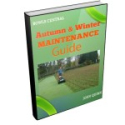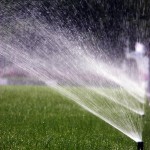Regular readers of my articles will know my views on bowling green maintenance problems; essentially there are only 2 that you have to worry about.
Everything else that goes wrong with greens is a symptom of these big 2 issues or indeed a symptom of the commonly held views on how to tackle the big 2.
What are the big 2?:
- Thatch: the build up of dead shoots, roots and debris on the turf surface that can get out of hand very quickly and cause or contribute to a huge number of problems. See my article on the circle of decline here
- Compaction: the squeezing of air out of the soil profile by foot and maintenance traffic.
Why I am banging on about this again?
Well hopefully your autumn and winter program is fully geared up to dealing with these two big issues.
By now I hope you have undertaken any major thatch removal work required and that you are now embarking on “an all winter long” attack on compaction.
Regular deep slit tining is the best way to relieve compaction; please note this is not a one off job regardless of how impressive the machine used.
It is necessary to continually slit tine the green through the winter to a depth of 150mm or deeper if you can.
Once a week isn’t too much, twice a month is more typical; stop during frost or excessively wet conditions but pick it up again as soon as possible afterwards.
For a full appraisal of essential winter maintenance tasks for your bowling green the Autumn/Winter report is still available at half price:



